
|
Wakeup Diet™
FAQ, Part 8 |
For SkepticsQUESTION. I need my chocolate and ice cream. What's the matter with pleasure foods? ANSWER. No pain. No gain. We understand that some people are “allergic” to diets. We thought that a weight-neutral diet would appeal to you. Frankly, we're sorry that it doesn't.
|
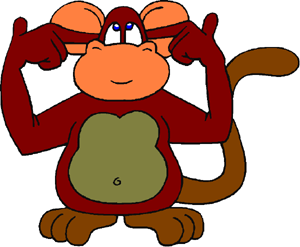
|
Now, time for some “tough love”: Your condition is your responsibility. This responsibility is part of what we mean by Conscious Regulation, one of the pillars of this program. Still, we aren't your mother. This one's on you. You're the best advocate for your own body. You control what goes into it and when. You're in charge of pushing yourself away from the dinner table. You decide to be a couch potato or go for a walk. If you don't support your own health, then nobody else will, either. If you wreck this body, you can't order a new one on EBay.
Meanwhile, be prepared for a lot of sympathetic lies. If you want to, you can use these excuses as a crutch. Or you can live your life the best way you can. Either way, you won't get a second chance.
When you want start taking care of Number One, visit us again.
QUESTION. How can I work exercise into my busy routine?
ANSWER. It's not as hard as you think. Most people spend considerable time with TV, cellphones, email, games and other virtual activities. Some of these activities are optional. You can watch one less situation comedy and devote the time to improving your health. If that's too hard, take the cellphone for a walk. Or bring your spouse. Get to know him or her by having a daily conversation. If the computer games are essential, play while pedaling a stationary bike or walking in place.
If email, Facebook and Twitter are your evening activities, buy a voice-dictation program such as Dragon Naturally Speaking. You can then dictate emails and tweets while exercising!
Some housework qualifies as exercise. For example, vacuuming, mowing the lawn, carrying in groceries or taking out the trash. You should perform these chores daily, and in the proper dayparts (before breakfast and before dinner).
Walk the dog (or yourself). One of the best exercises is walking. If that seems hard, consider this: Walking the dog counts as exercise! The hardest part of walking is the first step. You can start with a daily, five-minute stroll to the end of the block. After the walk becomes routine, extend it by a few minutes per day. The goal is at least 30 minutes. When you're ready, you can pick up the pace or increase the distance. A morning walk will wake you up. An evening walk will help you to relax into a restful sleep. A warm shower after walking will help. Eat dinner after the evening walk, not before. You want to be awake enough to take that walk. Looking forward to dinner adds a reward system. Besides, many people find that walking actually reduces the appetite.
Of course, some people can't walk. These people can swing and rotate the arms continuously during the news, including commercials. When the news is over, you'll have exercised for a half hour. If you don't like the news, pick any show that lasts for a half hour.
♦ WARNING. Before changing your routine, consult with a healthcare adviser who is qualified to advise you on diet and exercise. Your general practitioner might be able to refer you to such an adviser.
QUESTION. Only 100 calories for lunch? Is this a crash diet?
ANSWER. No, this isn't a crash diet. In fact, it is a diet and exercise system. As you should know from reading the diet details, the Wakeup Diet™ is a weight-neutral program. We concentrate on eating the right foods at the right time. To this regimen, we add exercise. We also exercise at particular times of day, the appropriate dayparts.
The dietary part of the program maintains the body weight, rather than reducing the weight. Within reason, those who wish to lose weight can simply adjust the calorie intake. In most cases, the total calories should adhere to the recommendations of the federal Department of Agriculture.
Yes, the lunch has fewer calories than do the other meals. During working hours, the Wakeup Diet™ concentrates on one low-calorie, lean protein meal. Also during this span, there are no snacks, including coffee or other stimulants. Over the course of the day, the calorie intake and food variety balance out. The protein meal offers the advantage of long-term, sustained energy, appetite suppression and improved wakefulness.
Recent studies by Duke and La Trobe universities support this meal plan. The Duke study proves that narcoleptics are significantly more awake on a protein diet. The La Trobe study proves that everybody becomes sleepier after consuming glucose. Yet narcoleptics are sleepier than normal after glucose consumption. For Web addresses of these studies, see our Links page.
Argonne Laboratories designed the Jet Lag Diet for the Federal government. In many ways, including the protein lunch, this diet parallels ours. Weight Watchers is the largest and foremost behavior-modification diet. We note that Weight Watchers has recently adjusted its program to reduce high-glycemic carbohydrates. This idea is consistent with recommendations by the South Beach Diet, The American Diabetic Association and The American Heart Association.
QUESTION. But soy contains estrogen-like phytochemicals. I'm concerned about uterine cancer.
ANSWER. Then be concerned about regular dairy products, too! Of course cow's milk includes actual estrogen. This isn't a phytochemical. It's real, animal estrogen very similar to the estrogen in the human body. Add cholesterol to the mix. Milk has it, but soy doesn't. Milk also has bovine growth hormone. Soy doesn't. Bottom line: If you're concerned about soy, check into the negatives of milk, too.
By the way, if you don't like soy milk, the Wakeup Diet™ also recommends almond milk. Try it! The unsweetened chocolate is scrumptious! Make sure that you get the unsweetened chocolate. There's no reason to torpedo the program by consuming extra refined sugar. Remember, sugar worsens both narcolepsy and jet lag. Besides, the natural sweetness of the almond milk is spectacular.
QUESTION. Do you have something against narcoleptics who take prescriptions?
ANSWER. This page is here to serve narcoleptics and other people with phasal disorders. Some of these people
take prescriptions. Those of us who support this page believe that medication is often the wrong treatment. Yet we don't
attack people who take prescribed drugs for their problems.
— The Webmaster
QUESTION. You can't just eat soy. You must have a diet with variety.
ANSWER. What gives you the idea that we only eat soy? You're mistaken. Nothing prevents the Wakeup Diet™ from being a variety diet. For example, consistent with Department of Agriculture recommendations, we encourage eating fresh fruit and vegetables.
|
We suggest soy products because they're palatable, easily digestible, and contain a lot of protein. Yet these products aren't the whole diet. Remember that soy is an important source of protein. But the protein and not the soy is the key point. Protein is important because it causes less of a depression than do fats and particularly carbohydrates. Also, protein tends to suppress the appetite for a long period. (You won't be “missing out.” Soy also contains carbohydrates and fats.) Soy products that frequently appear on our menu include edamame, soy milk, soy cheese and soy burgers. We don't eat soy any more often than most people eat beef products. Healthy Choice® makes a number of dinners that satisfy Wakeup Diet™ requirements. These delightful entrees are two of our favorites...
Note that the protein source isn't soybeans. Regular habits. Maybe you mean something else by “variety.” For instance, this isn't a diet of exotic foods. If you're looking for that sort of diet, you're on your own. Narcoleptics must maintain regular habits. Without these habits, we can't build an artificial circadian clock through Conscious Regulation. In fact, without regular habits, we might skip meals and just pass out instead. If the choice is no food or a routine food, most people will choose the routine food. That is another reason why this site suggests wholesome, basic foods. |
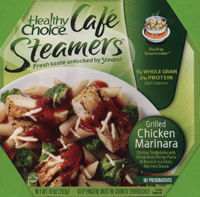
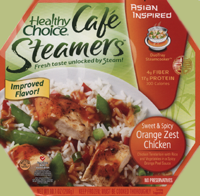
|
|
QUESTION. Could someone pursue the Wakeup Diet™ with other foods? ANSWER. Yes. But doing that would take extensive experimentation. For example, before discovering soy, we used lean turkey breast meat for the lunch. (Chicken breast is fine, too. And so is non-marinated, non-fried fish. Added fat is a taboo.) The turkey performed well, but left us more tired than did a soyburger. Earlier, we also used skim or powdered milk instead of soy and almond milk. Cow's milk seems to be slightly more tiring than soy. But you might not care. If you have no concerns about dairy products, skim milk is fine. Non-skim milk is too high in fat, and the labels are misleading. For example, in so-called “2 percent” milk, 38 percent of the calories come from fat! Don't believe us? Read the label. Also see Joe Piscatella's Choices for a Healthy Heart. About fat. The Wakeup Diet™ follows federal guidelines. Less than one-third of a healthy diet should come from fat. In America, this principle is actually hard to follow. Food labels often break down calories by weight. Yet a gram of fat has nine calories. A gram of protein or carbohydrate has only four calories. You can't go by ingredient weight alone! Always look for the percent of calories from fat. If the food contains more than one-third fat, then don't buy it. When you dine out, beware! About the best you can do in most restaurants is to keep the portion size reasonable. The meat portion should be no larger than a pack of playing cards. The total portion should cover an average dinner plate (not a platter) to less than one inch deep. Ask for a doggy bag! |
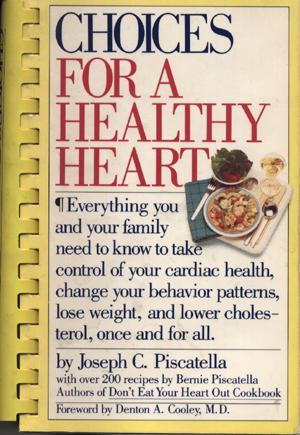
|
What not to eat. The Wakeup Diet™ has certain taboos. If you ignore these, you can't expect the diet to help you. For example, off the diet are pizza, steak, dessert and coffee break treats. Narcolepsy and jet lag have a way of keeping you honest. Going out for a big bowl of hot soup and croutons? Maybe a glass of wine, or a scoop of ice cream? Count on a visit from the Sandman.
QUESTION. Some people can't exercise. What about people with fibromyalgia?
ANSWER. This is a diet for phasal disorders, especially narcolepsy and jet lag. Of course, the diet doesn't claim to soothe fibromyalgia sufferers. On the other hand, your reasoning contains errors. Not everybody who has narcolepsy also has fibromyalgia. The fibromyalgia problem only excuses a subset of narcoleptics. Further, exercise can help at least some fibromyalgia sufferers.
Please understand the facts: No diet can answer all problems. On the other hand, good nutrition, appropriate meal times and exercise are unlikely to be harmful. In fact, they're likely to build a better immune system and an overall healthier body. Nurturing yourself with appropriate hygiene and daily exercise is the basis for many health regimens: For example, the Healthy Heart Diet and the American Diabetic Association recommendations.
For fibromyalgia in particular, exercise certainly isn't out of the question. This fibro site recommends an aerobic exercise program. If this site is right, and it probably is, fibromyalgia has common ground with narcolepsy: The human body needs exercise. Exercise regularly and you'll feel better. The benefit isn't just the endorphins that come with exercise. Exercise has a regulatory function. Tonight, you'll sleep better, because you'll be honestly exhausted. Tomorrow you'll be more fit, and you'll have a better immune system. And if you exercise when you should, you'll also tend to get hungry when you should. Plus, you'll tend to eat the right amount because those muscles will demand protein. Protein suppresses the appetite. Also, fatigue will set in and control further cravings.
For idealists who seek the “perfect diet”: The Wakeup Diet™ is a palliative program. Our program doesn't pretend to be the perfect diet. Any program that does is offering you a lie. See the disclaimer at the bottom of this page. We make no claim about curing narcolepsy. Instead, like all current pharmaceutical treatments for narcolepsy, the Wakeup Diet™ is a coping method. Still, these methods aren't equivalent. The difference is that regular exercise and eating right on an appropriate schedule are nutritive. Narcolepsy drugs aren't now and never will be nutritive. Instead, drugs tax the body and operate off its reserves, gradually depleting these reserves.
QUESTION. The industry proposes the use of certain narcolepsy stimulants to combat everyday sleepiness. What do you say to that?
ANSWER. Yikes. The proposed use of powerful stimulants is cause for concern. The idea seems to be that anyone can just ignore the bodyís sleep need and “switch it off.” This notion can lead to a host of problems, including weakening of the immune system. (See Stanley Corenís book Sleep Thieves.)
Where is the mention of “sleep rebound” (crash) when the stimulant wears off? What if it wears off in traffic, and the user is a school bus driver? What if the user is a surgeon, and the stimulant wears off while he's operating? Think about all the people in different walks of life that would suffer adverse consequences.
We aren't surprised that a pharmaceutical company is promoting its product. As capitalists, we recognize that sales promotion is fundamental to prosperity. Yet we must question the wisdom of widespread stimulant use as an everyday stopgap. Maybe the drug will become the pep pill du jour. Or possibly the new “American Breakfast,” a ready replacement for coffee and a cigarette.
We'll never forget the drug and alcohol-related deaths of Jimi Hendrix, Janis Joplin, Jim Morrison, Charlie Parker, and Michael Jackson. In the late 1960s, the Cream was a hugely popular rock group. Album covers portrayed its drummer, the incomparable Ginger Baker, aging prematurely from his speed (amphetamine) habit. Authors Jack Kerouac and Neal Cassady died in part from their abuse of speed. So did Judy Garland.
Despite our plunge toward instant gratification, people should appreciate that sleep is part of being. Without sleep, we canít be whole people. Instead of robbing Peter to pay Paul, a treatment should consider and respect the whole person.
QUESTION. Diet and exercise seem so hard. A pill seems so much easier, and I don't have to change my whole routine.
ANSWER. Life is hard. The Wakeup Diet™ makes no apology for the way things are. But you can be sure of this: Venture nothing and you gain nothing.
Drugs tend to cause problems for many people. Stimulants can raise your blood pressure. Abnormal blood pressure can lead to heart disease and strokes, regardless of your age. Some people are allergic to sleep medication. Others notice “drug hangover” effects the next day. (That is, lethargy. Severe enough that the sufferer might not notice cars while crossing streets.) Many prescription medications for narcolepsy are habit-forming. Some cause tolerance effects that vary between individuals. That is, for the same effect, you need progressively more medication over time. In other people, side effects might increase with use. These side effects can include irritability, depression, diarrhea, constipation, hallucinations and delusions, palpitations, anxiety and more. If you're a mother, you should know that the body excretes most narcolepsy drugs in mother's milk.
> There is no free lunch. Any choice that you make has consequences. The “easy way” tends to get much harder as you learn the facts. Example: At one time, the industry heralded the stimulant Cylert (Pemoline) as a very promising new narcolepsy drug. Today, this drug is unavailable. Unfortunately it causes irreversible liver damage.
The drugs have an advantage, though: Stimulants produce euphoria, especially on the first dose. This euphoria “sells” the drug. A narcoleptic on simulants might think that this euphoria is “my little secret.” But others notice the attitude change, just as they notice the “glow” that first indicates an alcohol high. What if the one who notices is your human resources director? You might have some embarrassing disclosures to make. When the drug wears off, particularly after several uses, the opposite effect will weigh you down: Dysphoria, that is, anxiety, depression or unease. You might lose your focus. You might become disoriented. You might lose your way. Worse, drowsiness could overtake you as your symptoms rebound, more severe than ever. You could even start hallucinating in the middle of that commute home. Now, how about another dose? Don't you want to feel really good again? And so the drugs close another sale.
Unlike narcolepsy prescriptions, the Wakeup Diet™ is a nutritive program. It will build you up while the drugs would tear you down. Diet and exercise on a regular schedule are part of normal, healthy behavior. Of course, we assume that your other health conditions don't prevent you from participating. Yet we'd be dubious about alleged conditions that prevent eating and exercising right. Most doctors would agree.
QUESTION. What if the drugs had worked for you? Wouldn't you have a different point of view?
|
ANSWER. Then I'd be a different person. In that case, I wouldn't provide these pages to help narcoleptics and phase-shifted individuals. Now let's look at the real world: My passion is restoring the health and performance of narcoleptics, without resorting to medications. Most doctors support the idea that a healthy diet, frequent exercise and regular habits are good for you: This is a summary of the Wakeup Diet™. The program is nutritive. It brings you more restful sleep at night, and stronger alertness by day. Better still, the Wakeup Diet™ builds on your natural capabilities, instead of fighting or suppressing them. Medications do just the opposite. They only operate (if they do) by fighting, distorting and depleting your body and mind. The body adapts over time. Among the adaptations are tolerance and drug-seeking behavior. Doctors may actually indulge such behaviors by increasing the dose or adding different controlled substances. Then enhanced or additional side effects typically occur. Side effects such as damage to the brain's dopaminergic channel can be permanent. For instance, imagine yourself with tardive diskinesia (uncontrollable facial tics) or Parkinson's Disease. Stimulant use for narcolepsy could cause either problem. In Medication Madness, Dr. Peter Breggin describes other side effects (not all) that you'll experience. At every narcolepsy support group meeting that I've ever attended, patients complain
about medication problems: And expenses. These problems are a crying shame, because the Wakeup Diet™ is so
effective, easy and healthy.
|
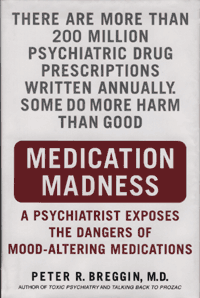
For quotes from Dr. Breggin, click book image repeatedly. |
QUESTION. Your program seems to have some useful elements. Couldn't I just use the parts that make sense to me?
ANSWER. Sure. You can use any part that helps you. Yet there's a built-in problem to using just part of the program: Half measures guarantee half results, or no result. If you don't believe in the Wakeup Diet™, why would you expect some arbitrary part of it to succeed? What you propose is bound to fail. Or maybe that's what you really want.
I ask you...
- Would you take half your prescription and expect it to keep you alert?
- Would you drive halfway to work and expect to arrive on time?
- Would you eat half your dinner and expect it to fill you up?
More than the parts. Each part of the Wakeup Diet™ will help you with one part of your day. Yet only the whole program can restore your circadian rhythms.
QUESTION. Could I “tip the toe” into your program by trying one food at a time?
ANSWER. What is your goal? If you just want to eat healthy foods, fine. Otherwise, no. There is no substitute for commitment to the program. “Tipping the toe” can't relieve symptoms of narcolepsy or jet lag. In fact, using part of the program will probably make your symptoms worse.
You seem to concentrate on the foods and not the timing aspect. This is a timed program and not just a “healthy food” diet. Actually, timing might be the more important part.
> For instance, if someone eats the breakfast at lunchtime, the foods remain healthy. Yet the improperly timed breakfast tends to trigger a sleep attack. The same goes for moving dinner to lunchtime, or dinner to breakfast. If you eat just the breakfast, but consume a typical American lunch, again, an attack ensues. Moving the lunch later is okay, but not if you snack. One also canít swap the exercise and meal times. Exercise resets the circadian clock. Moving the exercises will set the clock to the wrong time. The effect is like switching on a light box at night. Our point is that program timing makes “tipping the toe” impractical.
We donít recommend a casual approach to this diet. The suggestion troubles us, because weíve researched many variations and know that they donít work.
QUESTION. Of course your research shows that narcolepsy medications are dangerous. Other research proves the exact opposite.
ANSWER. Wrong. No responsible medical research claims that stimulants and Xyrem are completely safe. We're not talking about mother's milk. Stimulants such as Ritalin, Adderall, Methamphetamine and Concerta are Schedule II controlled substances. That means our government considers these drugs to be as dangerous as cocaine and morphine. Have you read the labels that come with your meds? There in black and white are the risks of brain damage and cardiac problems including death. One side effect of Xyrem is that the patient stops breathing. One side effect of Provigil is Stevens Johnson Syndrome, a rash that looks like third-degree burns. See: Treatment problems.